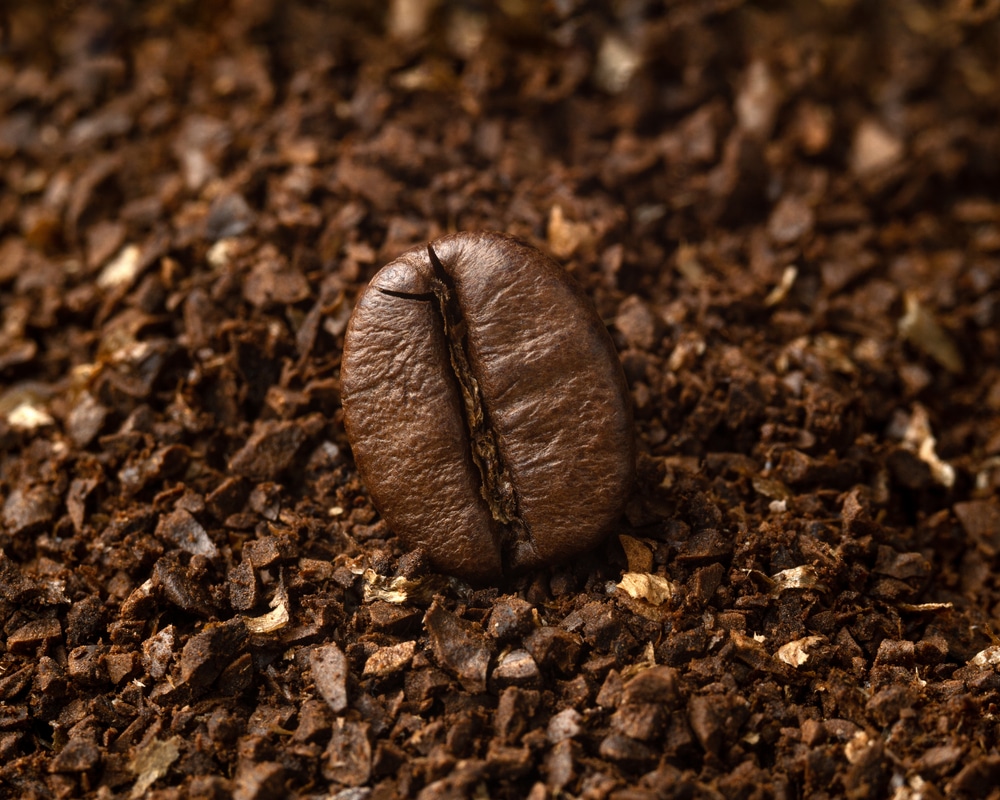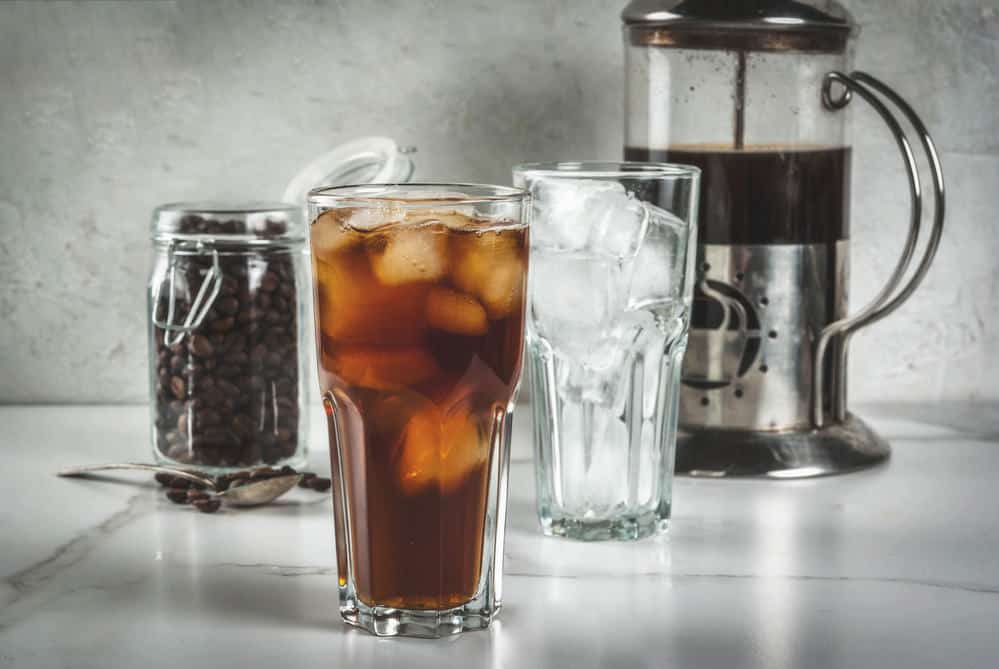Cold Brew Grind Size

Cold Brew Coffee
Cold brew is a delicious and easy coffee brewing method that involves steeping coarsely ground coffee beans in cold water for an extended period, usually 12-24 hours. The result is a smooth, rich, and slightly sweet coffee concentrate that can be served over ice or diluted with water or milk.
Cold brew is known for its lower acidic profile and bitterness compared to traditional hot brewed coffee, making it a refreshing and easy-drinking option, especially during warmer months. This method brings out different flavor profiles in the coffee beans, highlighting their natural sweetness and chocolatey or nutty undertones. Cold brew has gained popularity in recent years for its convenience, smooth taste, and versatility in enjoying it as is or as a base for various coffee beverages.
Why Grind Size Matters?
Grind size refers to the particle size of your coffee grounds, which plays a crucial role in the brewing process. Different brewing methods require a specific grind size to optimize extraction and achieve the desired flavor profile and strength. A good cup of coffee requires proper extraction so if you want a good cup of joe do not ignore grind size and invest in a good quality burr grinder.
For example, espresso requires finely ground coffee to maximize surface area and extraction in a short amount of time, while French press coffee calls for a coarser grind to prevent over-extraction. Pour-over methods like V60 or Chemex benefit from a medium grind, allowing for a balanced extraction and clarity of flavors.
The importance of coffee grind size lies in its ability to control the rate of extraction and flavor extraction. If the grind is too fine, the coffee may taste bitter and over-extracted. On the other hand, if it’s too coarse, the coffee might be under-extracted and lack coffee flavor.
To ensure the best results for your brew, it’s essential to use the appropriate grind size for your chosen brewing method. Adhering to the specific grind size ranges for each method will help you achieve the perfect cup of coffee every time.
Coarse Grind For Cold Brew

For cold brew, it’s typically recommended to use a coarse grind. This choice is influenced by the extended steeping time and the extraction process. The coarse grind facilitates a slow and gentle extraction, yielding a smooth, rich, and less acidic coffee. This grind size contributes to a sweet and balanced flavor profile, striking an ideal equilibrium between extraction speed and flavor clarity.
The coarse grind is similar in consistency to coarse sea salt. This grind size is ideal for cold brew because it allows water to permeate the grounds slowly. The extended steeping time compensates for the slow extraction, resulting in a well-balanced and smooth cup of cold brew.
The Impact of Grind Size on Extraction
Understanding the science behind grind size and extraction is crucial for achieving the perfect cold brew. When water comes into contact with coffee grounds, it dissolves and extracts soluble compounds like acids, sugars, and oils. The rate at which these compounds are extracted depends on the surface area of the coffee grounds exposed to water.
In the case of a coarse grind, the larger particle size means less surface area is exposed to the water in comparison to a fine grind. This slower extraction process is ideal for cold brew, as it allows for a more controlled release of flavors without the risk of over-extraction.
Prevention of Over-Extraction
As the water in cold brewing slowly works its way through the coarse grounds, it extracts the coffee’s desirable compounds, yielding a flavorful and less acidic beverage. A coarse grind in cold brew prevents bitterness by allowing for good extraction of flavor compounds while minimizing the extraction of bitter elements.
Reduction of Sediment
The coarse grind size also affects the filtering process. Coarser grinds reduce the amount of sediment in the final brew, providing a cleaner cup with fewer particles. The larger particles are easier to filter out, resulting in a cleaner cold brew with less sediment.
Experimentation with Grind Size
While a coarse grind is the conventional choice for cold brew, personal preferences can vary. Some coffee enthusiasts enjoy experimenting with different grind sizes to achieve unique flavor profiles. A finer grind, while unconventional for cold brew, can result in a more intense and concentrated cup with a different mouthfeel.
Experimenting with grind size also allows you to tailor your cold brew to specific tastes. If you prefer a stronger brew, you might opt for a slightly finer grind such as medium coarse grind, adjusting the steeping time accordingly. However, it’s essential to note that a finer grind increases the risk of over-extraction, potentially leading to a bitter and unpleasant taste.
When using a slightly finer grind than traditional recommendations for cold brew, the increased surface area of the coffee grounds helps to pull out enough sugars from the beans, which can help avoid the sourness that is often associated with cold brew. This can result in a cold brew that is sweeter and more balanced, with a smoother mouthfeel.
Consistency is Key
Consistency in grind size is paramount for a balanced and uniform cold brew. Variations in grind size can lead to uneven extraction, resulting in a brew that lacks harmony in flavor. Investing in a quality burr coffee grinder and paying attention to the grind size ensures a consistent particle distribution, ultimately contributing to a more predictable and enjoyable cold brew experience.
Essentials for Crafting Outstanding Cold Brew

Clean Equipment
Ensure that all brewing equipment is thoroughly cleaned before each use to prevent any residual flavors from impacting the taste of the cold brew.
Quality Coffee Beans
Start with high-quality, freshly roasted coffee beans. The flavors of your cold brew will largely depend on the origin, variety, and roast level of the coffee.
Coarse Consistent Grind Size
Use a coarse grind for the coffee beans. A coarse grind helps control the extraction process during the extended steeping time, resulting in a smoother and less acidic cold brew. Using burr grinders rather than blade coffee grinders will ensure more consistency in grind sizes, thus more even extraction for balanced flavor.
Filtered Water
Use clean and filtered water to avoid any unwanted flavors or impurities. Cold brew is primarily water, so the quality of water significantly impacts the taste of the final brew.
Proper Coffee-to-Water Ratio
Follow a recommended coffee-to-water ratio. A common starting point is 1:8 (one part coffee to eight parts water) if you want a ready-to-drink beverage, but you can adjust it according to your taste preferences. So for 1 gram of coffee add 8 grams of water. If you desire a more intense and concentrated coffee that can be diluted to your taste, opt for a ratio of 1:4. This ratio is a good starting point to make a cold brew concentrate that is meant to be diluted prior to consumption.
Temperature and Steeping Time
Brew in cold or room temperature water for an extended period, typically 12 to 24 hours. Experiment with steeping times or brew time to find the balance between strength and smoothness.
Patience in Straining
Take your time when straining the cold brew to ensure the removal of coffee grounds. Using a fine mesh sieve, cheesecloth, or a purpose-made cold brew coffee filter can help achieve a clean and sediment-free result.
Experimentation and Personalization
Don’t hesitate to experiment with different coffee beans, grind sizes, and ratios to find the combination that suits your taste. Cold brew is versatile, allowing for customization based on individual preferences.
In the realm of cold brew coffee, the grind size of your beans is a critical factor that can make or break your brewing experience. The coarse grind, with its larger particles, is the preferred choice for this slow and methodical extraction process. It allows for a controlled release of flavors, yielding a smooth and less acidic cup of cold brew. Overall, the best grind size for cold brews is coarse, as it allows for a balanced extraction and filtering process, resulting in a smooth and flavorful cold brew.
Understanding the science behind grind size and its impact on extraction empowers coffee enthusiasts to experiment and tailor their cold brew to specific preferences. While the conventional wisdom suggests a coarse grind, some may find joy in exploring alternative grind sizes to discover unique flavor profiles. The science of cold brew grind size underscores the intricate dance between water and coffee grounds, showcasing the versatility and creativity that coffee brewing can offer to those who seek the perfect cup.
Frequently Asked Questions
Can You Use Regular Pre-ground Coffee For Cold Brew?
While it’s possible to use regular pre-ground coffee for cold brew, it’s strongly advisable to opt for freshly coarse-ground beans. The use of fresh beans helps maintain the coffee’s quality and flavors, ultimately enhancing the overall taste.
If you choose to go with pre-ground coffee, steer clear of the standard variety and specifically look for grounds designed for cold brew. Standard pre-ground coffee is typically too finely ground for cold brewing, increasing the risk of over-extraction. Additionally, its fine grounds may not filter effectively, potentially resulting in a bitter coffee taste and a gritty texture.
Should you decide to stick with conventional pre-ground coffee, it will be necessary to modify your steeping duration and employ a finer filter.
Does It Matter What Type Of Coffee Beans You Use for Cold Brew?
Your choice of coffee beans significantly influences the taste of your cold brew, allowing you to tailor the experience to your preferences. Whether you favor the well-balanced notes of a medium roast or the robustness of a dark roast, opting for high-quality beans that match your taste enhances the cold brew experience. While light roasts are an option, their flavors might be too subtle for this brewing method. Whatever roast you select it is ideal to use coarsely ground beans.
What Is The Perfect Ratio For Cold Brew Coffee?
The ideal ratio for cold brew coffee depends on personal taste, desired strength, and the characteristics of the coffee beans. A typical starting point for a ready-to-drink cold brew is a 1:8 coffee-to-water ratio, translating to one part coffee and eight parts water. For a cold brew concentrate that can be diluted to suit your taste, consider a 1:4 ratio. Adjust the ratios according to your taste preferences.
Mary is a writer at Caffe Streets. She works in the healthcare field and finds pleasure in learning, researching, and sharing coffee-related information with coffee enthusiasts worldwide. Her coffee of choice is the affogato, a beverage/dessert she deems simply perfection.





